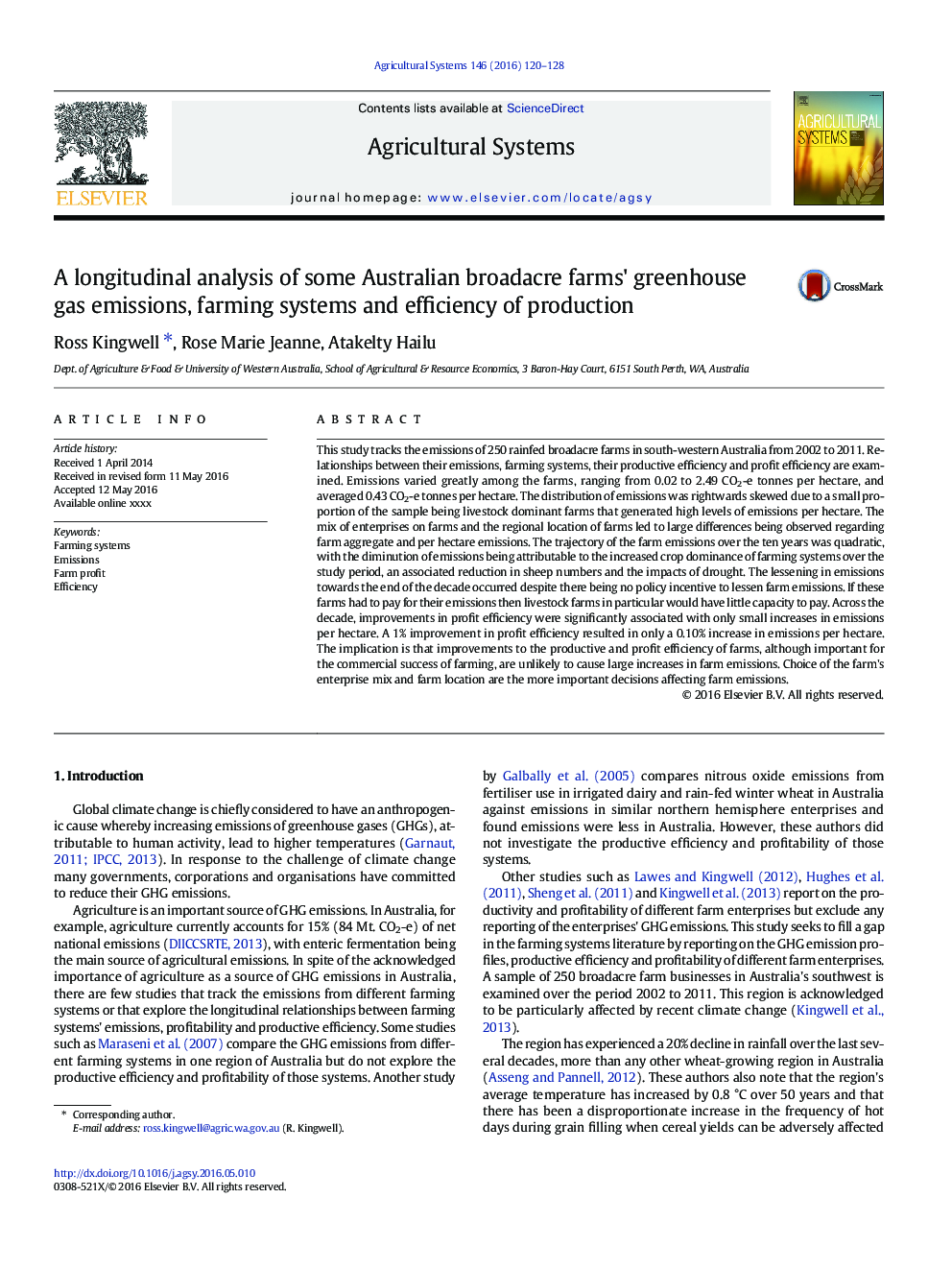| Article ID | Journal | Published Year | Pages | File Type |
|---|---|---|---|---|
| 6368386 | Agricultural Systems | 2016 | 9 Pages |
Abstract
This study tracks the emissions of 250 rainfed broadacre farms in south-western Australia from 2002 to 2011. Relationships between their emissions, farming systems, their productive efficiency and profit efficiency are examined. Emissions varied greatly among the farms, ranging from 0.02 to 2.49Â CO2-e tonnes per hectare, and averaged 0.43Â CO2-e tonnes per hectare. The distribution of emissions was rightwards skewed due to a small proportion of the sample being livestock dominant farms that generated high levels of emissions per hectare. The mix of enterprises on farms and the regional location of farms led to large differences being observed regarding farm aggregate and per hectare emissions. The trajectory of the farm emissions over the ten years was quadratic, with the diminution of emissions being attributable to the increased crop dominance of farming systems over the study period, an associated reduction in sheep numbers and the impacts of drought. The lessening in emissions towards the end of the decade occurred despite there being no policy incentive to lessen farm emissions. If these farms had to pay for their emissions then livestock farms in particular would have little capacity to pay. Across the decade, improvements in profit efficiency were significantly associated with only small increases in emissions per hectare. A 1% improvement in profit efficiency resulted in only a 0.10% increase in emissions per hectare. The implication is that improvements to the productive and profit efficiency of farms, although important for the commercial success of farming, are unlikely to cause large increases in farm emissions. Choice of the farm's enterprise mix and farm location are the more important decisions affecting farm emissions.
Related Topics
Life Sciences
Agricultural and Biological Sciences
Agricultural and Biological Sciences (General)
Authors
Ross Kingwell, Rose Marie Jeanne, Atakelty Hailu,
